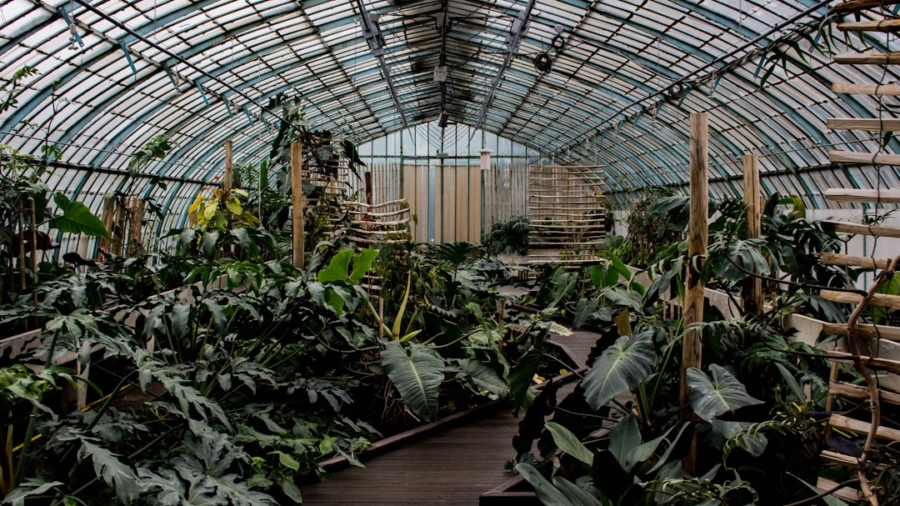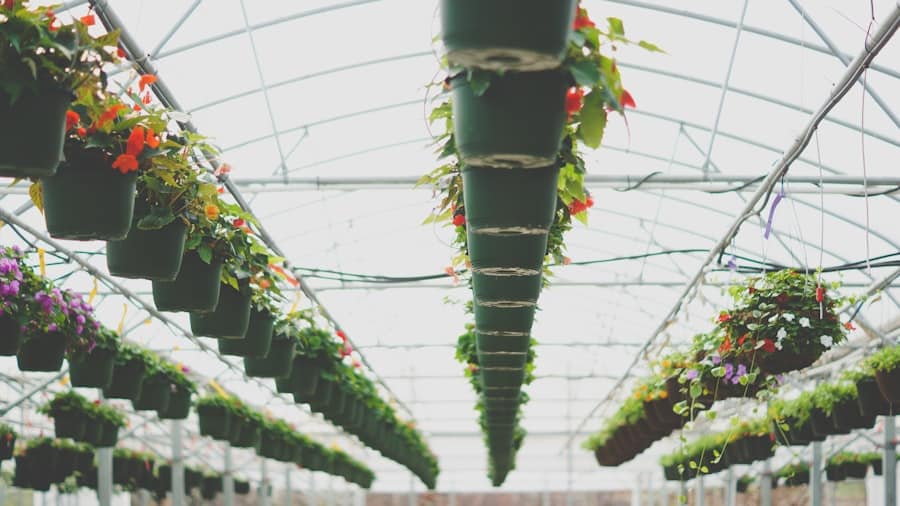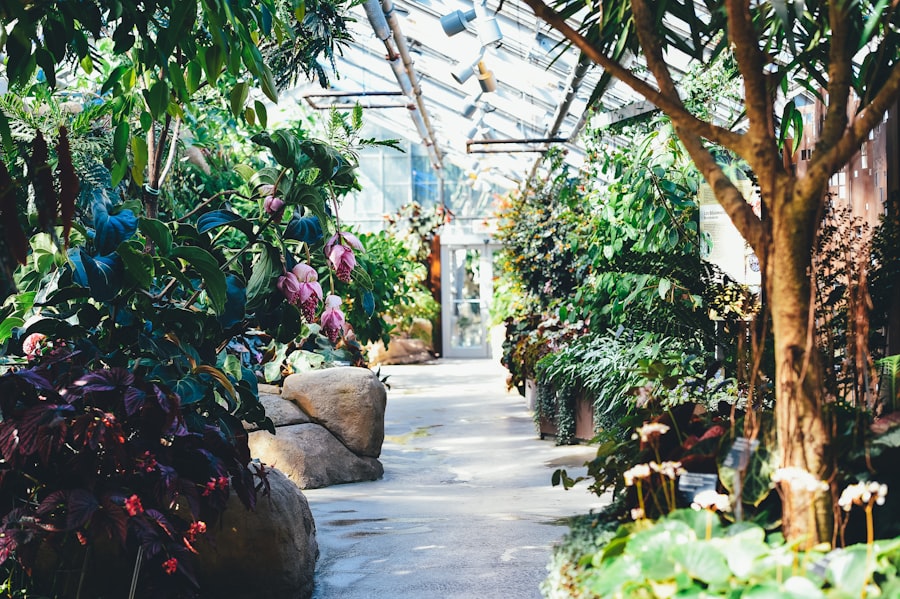The advent of smart greenhouses marks a significant evolution in agricultural practices, merging traditional horticulture with cutting-edge technology. These innovative structures utilize a combination of sensors, data analytics, and automated systems to create an optimal growing environment for plants. By leveraging the Internet of Things (IoT), smart greenhouses can monitor and adjust conditions such as temperature, humidity, light levels, and soil moisture in real-time.
This integration of technology not only enhances the efficiency of agricultural production but also addresses some of the pressing challenges faced by modern farming, including climate change, resource scarcity, and the need for sustainable practices. Smart greenhouses are designed to maximize crop yield while minimizing resource use. They can be equipped with various technologies, such as climate control systems, hydroponics, and vertical farming techniques, which allow for year-round cultivation regardless of external weather conditions.
The ability to collect and analyze data from multiple sources enables farmers to make informed decisions about their crops, leading to improved management practices. As the global population continues to rise, the demand for food increases, making the development and implementation of smart greenhouses not just beneficial but essential for future food security.
Key Takeaways
- Smart greenhouses utilize advanced technologies to create an optimal environment for plant growth, leading to increased efficiency and production.
- The implementation of automation and control systems in smart greenhouses allows for precise monitoring and adjustment of environmental conditions, leading to enhanced crop quality and yield.
- Smart greenhouses promote environmental sustainability by reducing resource consumption and minimizing the use of harmful chemicals.
- Integration of advanced technologies such as IoT, AI, and data analytics in smart greenhouses enables real-time decision making and predictive maintenance, further improving efficiency and production.
- The future potential of smart greenhouses lies in the continued development of innovative technologies and practices to further optimize crop production and sustainability.
Increased Efficiency and Production
One of the most significant advantages of smart greenhouses is their ability to enhance efficiency and production levels. By utilizing advanced monitoring systems, these greenhouses can optimize environmental conditions tailored specifically to the needs of different crops. For instance, sensors can detect when light levels drop below optimal thresholds and automatically adjust artificial lighting to ensure that plants receive adequate illumination for photosynthesis.
This precise control over environmental factors leads to faster growth rates and higher yields compared to traditional farming methods. Moreover, smart greenhouses can implement precision agriculture techniques that allow for targeted interventions. For example, instead of applying water or nutrients uniformly across an entire field, sensors can identify specific areas that require attention based on real-time data.
This targeted approach not only boosts productivity but also reduces waste, as resources are allocated more efficiently. The result is a significant increase in crop output per square foot, making smart greenhouses a viable solution for meeting the food demands of an ever-growing population.
Environmental Sustainability
The environmental benefits of smart greenhouses are profound and multifaceted. Traditional agriculture often relies heavily on chemical fertilizers and pesticides, which can lead to soil degradation and water pollution. In contrast, smart greenhouses promote sustainable practices by utilizing organic growing methods and integrated pest management systems.
By closely monitoring plant health and environmental conditions, these systems can reduce the need for harmful chemicals while still maintaining high crop quality. Additionally, smart greenhouses can significantly reduce carbon footprints through energy-efficient designs and renewable energy sources. Many smart greenhouses incorporate solar panels or wind turbines to generate their own energy, minimizing reliance on fossil fuels.
This commitment to sustainability not only benefits the environment but also aligns with the growing consumer demand for eco-friendly products.
Automation and Control Systems
Automation is at the heart of smart greenhouse technology, enabling seamless control over various aspects of plant cultivation. Automated systems can manage everything from climate control to irrigation schedules without requiring constant human intervention. For instance, climate control systems can automatically adjust heating or cooling based on real-time temperature readings, ensuring that plants remain in their ideal growing conditions throughout the day and night.
Moreover, automation extends to nutrient delivery systems that can precisely mix and distribute fertilizers based on the specific needs of each crop. This level of control minimizes human error and allows for consistent application of nutrients, which is crucial for maintaining plant health and maximizing yield. The integration of automation not only streamlines operations but also frees up labor resources, allowing farmers to focus on other critical aspects of their business.
Enhanced Crop Quality and Yield
The ability of smart greenhouses to enhance crop quality and yield is one of their most compelling features. By providing an environment that is meticulously controlled and monitored, these greenhouses can produce crops that are not only more abundant but also healthier and more resilient. For example, by regulating factors such as humidity and temperature, smart greenhouses can reduce the incidence of diseases that often plague traditional farming methods.
Furthermore, the use of advanced growing techniques such as hydroponics or aeroponics within smart greenhouses allows for greater control over nutrient delivery. These methods enable plants to absorb nutrients more efficiently than they would in soil-based systems, resulting in faster growth rates and improved flavor profiles. As consumers increasingly seek out high-quality produce with superior taste and nutritional value, smart greenhouses are well-positioned to meet this demand.
Reduction of Resource Consumption
Resource consumption is a critical concern in agriculture, particularly in terms of water and energy use. Smart greenhouses address these issues head-on by implementing technologies designed to minimize waste and optimize resource utilization. For instance, advanced irrigation systems equipped with soil moisture sensors can deliver water only when necessary, significantly reducing overall water consumption compared to traditional irrigation methods.
Energy efficiency is another area where smart greenhouses excel. By utilizing energy-efficient lighting systems such as LED grow lights and incorporating passive solar design principles, these structures can drastically lower their energy requirements. Additionally, many smart greenhouses are designed to recycle water through closed-loop systems that capture excess moisture from the air or runoff from irrigation processes.
This not only conserves water but also reduces the need for external water sources.
Integration of Advanced Technologies
The integration of advanced technologies is a hallmark of smart greenhouse design. From artificial intelligence (AI) to machine learning algorithms, these technologies play a crucial role in optimizing greenhouse operations. AI can analyze vast amounts of data collected from sensors to identify patterns and predict future conditions, allowing farmers to make proactive decisions about crop management.
Moreover, the use of drones in smart greenhouses is becoming increasingly common. Drones equipped with cameras and sensors can monitor plant health from above, providing valuable insights into crop conditions that may not be visible from the ground level. This aerial perspective allows for early detection of issues such as pest infestations or nutrient deficiencies, enabling timely interventions that can save crops from potential damage.
Future Potential and Development of Smart Greenhouses
The future potential of smart greenhouses is vast and promising as technology continues to advance at an unprecedented pace. Ongoing research into biotechnology and genetic engineering may lead to the development of crops that are even more resilient to environmental stressors such as drought or disease. Coupled with smart greenhouse technology, these advancements could revolutionize food production by enabling farmers to grow high-quality crops in previously inhospitable environments.
Furthermore, as urbanization continues to rise globally, the concept of urban farming within smart greenhouses is gaining traction. Vertical farming techniques combined with smart greenhouse technology could allow cities to produce fresh produce locally, reducing transportation costs and carbon emissions associated with food distribution. This shift towards localized food production not only enhances food security but also fosters community engagement in sustainable practices.
In conclusion, the evolution of smart greenhouses represents a transformative shift in agriculture that holds immense potential for enhancing efficiency, sustainability, and crop quality while addressing global food security challenges. As technology continues to advance and integrate into agricultural practices, the future landscape of farming will likely be shaped by these innovative solutions that prioritize both productivity and environmental stewardship.
If you are interested in exploring the benefits of smart technology beyond greenhouses, you may want to check out this guide on choosing your child’s first smartphone helpful. And for those looking to unlock new possibilities with their smartphone, be sure to read this article on the Samsung Galaxy S22. Smart technology continues to revolutionize various aspects of our lives, offering convenience, efficiency, and connectivity like never before.
FAQs
What is a smart greenhouse?
A smart greenhouse is a technologically advanced agricultural structure that uses sensors, actuators, and control systems to create an optimal environment for plant growth. It can automatically adjust factors such as temperature, humidity, light, and irrigation to maximize crop yield and quality.
What are the benefits of smart greenhouses?
Smart greenhouses offer several benefits, including increased crop yields, improved resource efficiency, reduced labor costs, and the ability to grow crops in non-ideal climates. They also provide real-time monitoring and control, which can lead to better decision-making and more sustainable farming practices.
How do smart greenhouses improve resource efficiency?
Smart greenhouses can optimize resource usage by precisely controlling factors such as water, nutrients, and energy. This can lead to reduced water and fertilizer consumption, as well as lower energy costs. Additionally, the ability to grow crops in a controlled environment can minimize the impact of external factors such as pests and diseases.
What types of crops can be grown in smart greenhouses?
A wide variety of crops can be grown in smart greenhouses, including vegetables, fruits, herbs, flowers, and ornamental plants. The controlled environment provided by smart greenhouses allows for the cultivation of crops that may not thrive in traditional outdoor settings, as well as the extension of growing seasons for certain plants.
Are smart greenhouses environmentally friendly?
Smart greenhouses can contribute to environmental sustainability by reducing the overall environmental impact of agriculture. By optimizing resource usage and minimizing the need for chemical inputs, smart greenhouses can help conserve water, reduce pollution, and mitigate the effects of climate change.



